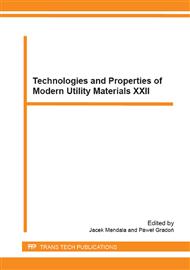p.59
p.65
p.69
p.75
p.79
p.87
p.91
p.95
p.99
Durability of Tube Bends Made of the 14MoV6-3 Steel under Low-Cycle Fatigue Conditions and Creep at a Temperature of 500°C
Abstract:
The paper contains the results of theoretical and experimental research on tube bending process used in manufacturing of 14MoV6-3 steel tubes. The innovative tube bending process using local induction heating and the results of finite-element numerical analysis of tube bends using Symufact Forming 11.0 software were presented. Numerical analysis covered the changes in pipe bend geometry (ovalization of cross section, wall thickness) and the results were compared with those obtained in industrial conditions. Basic mechanical properties of bended tube (diameter 323.9 mm, wall thickness 40 mm) in the supply condition and after heat treatment were determined using tensile, hardness, impact, low-cycle fatigue and creep tests. It has been shown that 14MoV6-3 steel tube bends manufactured using proposed technology meet the requirements of the PN-EN 10216-2 standard.
Info:
Periodical:
Pages:
79-86
Citation:
Online since:
January 2015
Authors:
Keywords:
Price:
Сopyright:
© 2015 Trans Tech Publications Ltd. All Rights Reserved
Share:
Citation:


